According provided by Sigma Zoom 28-200mm 1: 3.5-5.6 DL Hyperzoom Macro Aspherical IF lens (Nikon version) is huge thanks to the store www.fotika.com.uawhere you can find a huge number of different used photographic equipment, including similar lenses for Nikon cameras.
In short
Sigma Zoom 28-200mm 1: 3.5-5.6 DL Hyperzoom Macro Aspherical IF - functionally very similar to SIGMA ZOOM 28-200mmD 1: 3.8-5.6 UC Aspherical.
The Sigma 28-200 / 3.5-5.6 DL is a classic old hyperzoom (it even has the 'Hyperzoom' prefix in the name). Of the obvious advantages, I want to immediately highlight the large zoom ratio, good build quality and good pseudo-macro. Image quality is poor and lower than comparable older lenses such as the original Nikon 28-200mm 1: 3.5-5.6D AF Nikkor.
In the secondary market, such hypersums are of low cost and can serve as an excellent service for amateur photography.
Main technical characteristics of Sigma Zoom 28-200mm 1: 3.5-5.6 DL Hyperzoom Macro Aspherical IF:
| Review Instance Name | Inscription near the front lens: Sigma Zoom 28-200mm 1: 3.5-5.6 DL Hyperzoom Macro LENS MADE IN JAPAN ø72, inscription on the housing 28-200mm Aspherical IF 2074908 |
| Basic properties |
|
| Front Filter Diameter | 72 mm |
| Focal length | 28-200 mm EGF for Nikon DX cameras is 42-300 mm |
| Zoom ratio | 7.14 X (often rounded to 7) |
| Designed by | for film cameras (available in versions for Canon, Minolta / Sony, Nikon, Pentax, Sigma SA) |
| Number of aperture blades | 8 straight petals, form a fairly even hole on slightly covered diaphragms |
| Tags | focusing distance in meters and feet, focal lengths for 28, 35, 50, 80, 135, 200 mm, aperture values, aperture lock. Scale with a magnification ratio of Macro 1:12, 1: 8.8, 1: 6.1, 1: 4.5, 1: 4.1 |
| Diaphragm |
The lens has an aperture ring (Non-G - lens type). On the aperture ring there are marks F / 3.5, 5.6, 8, 11, 16, 22. The ring has no intermediate values |
| MDF (minimum focusing distance) | 0.5 m by 200 mm, the maximum magnification ratio is 1: 4.1 |
| The weight | November 515, XNUMX |
| Optical design | Two Aspherical Sigma Aspherical Elements Used
No exact optical data found |
| Lens hood | bayonet model unknown |
| Manufacturer country | LENS MADE IN JAPAN (Japan) |
| Period | Circa 1999 to 2004 |
| Price | Prices for modern universal Sigma lenses are available see here. |
Assembly
The build quality of the Sigma 28-200 / 3.5-5.6 DL is good. The lens uses a metal mount. The retractable body frame consists of two sections. The zoom rings are rubberized, while the focus and iris rings are plastic. The zoom ring rotates 90 degrees.
Frame (trunk) of the Sigma 28-200 / 3.5-5.6 DL spontaneously changes its size under its own weight (perhaps this begins only with time). For example, when the camera is tilted down, the trunk of the lens spontaneously lengthens (focal length increases).
Sigma 28-200 / 3.5-5.6 DL can use a plastic hood, which is fixed in special grooves located near the front lens of the lens. When changing the focal length, the hood moves with the movable frame of the housing. The hood can be installed in the opposite direction for transportation. I have not seen such a tiny original lens hood.
When changing the focal length, the rear lens moves in the middle of the lens body like a pump - it draws in and pushes out air. This behavior of the rear lens is called 'vacuum cleaner effect', which can increase the amount of dust that accumulates in the camera.
Устройство aperture consists of 8non-rounded petals.
Although the lens bears in its name DLwhich some interpret as DeLuxe, in fact this designation applies only to budget film lenses.
Focusing
The autofocus speed is independent of the selected focal length. Focusing speed - fast (closer to medium).
When changing the focal length, the front lens does not rotate.
During focusing, the front and rear lenses remain stationary, as the lens uses internal focusthat is indicated on the case by the letters'IF'-'Iinternal Focus' - 'Inner Focus'.
The focus ring rotates only 75 degrees. The stroke of the ring is smooth. The minimum focusing distance is 0.5 m by 200 mm, while the maximum magnification ratio is 1: 4.1, which is a good indicator for such a lens. By the way, large MDF was one of the main problems of the original lens Nikon 28-200mm 1: 3.5-5.6D AF Nikkor.
When used on a camera Nikon D90 (with unpretentious Multi-CAM 1000 focusing system) behaves well, very rarely makes a mistake in focusing. On camera Nikon D90 I checked the presence of the back and focus front at different focusing distances and different values of the focal length (infinity and MDF as well). Pictures taken using the Live View mode (which does not suffer from back / front focus) were used as a measure. Focusing accuracy using phase sensors completely coincided with the Live View mode.
It's important: auto focus with this lens is available only when using him on cameras with built-in motor focusing.
Exact list Nikon DSLR cameras with a built-in focus motor, on which this lens will focus automatically:
- D1, D1h, D1x, D2x, D2xs, D2h, D2hs
- D3, D3x, D3s, D4, D4s, D5, D6
- Df
- D50, D70, D70s, D80, D90
- D7000, D7100, D7200,D7500
- D100, D200, D300, D300s,D500
- D600, D610, D750, D780
- D700, D800,D800E, D810, D810a, D850
- Fujifilm FinePix S1 Pro, S2 Pro, S3 ProS3 Pro UVIR, S5 ProIS Pro
- Kodak DCS PRO 14n, DCS Pro SLR/n
Exact list Nikon DSLR cameras without a built-in focus motor, on which this lens will not focus automatically:
Only auto focus and sound confirmation of focus will not work with these cameras, all other important functions, such as automatic exposure metering and automatic iris control, will work well.
You will find a lot of useful information on the types of cameras and lenses Nikon here.
Focus Features:
- Sigma 28-200 / 3.5-5.6 DL does not have a focus mode switch. To translate the lens into manual focus on cameras with motor For focusing, use the focus mode switching lever located near the camera mount. For cameras without motor Only manual focus mode will always be available for focusing.
- During focusing, the focus ring rotates and must not be touched.
- Focus speed may vary slightly from the camera used. This issue has been considered. here.
- During focusing, the lens and camera are quite noisy. Noise is heard even during manual focus.
- There is the effect of 'Focus Breathing' (changes in viewing angle during focusing).
- Sigma 28-200 / 3.5-5.6 DL is a third-party lens. It may happen that it will not work correctly with some Nikon cameras. Details on this issue are considered by me. here.
- When changing the focal length, focusing is lost.
- Sigma 28-200 / 3.5-5.6 DL transfers the value of the focusing distance to the subject in the camera and is a type lens Nikon D.
- The lens has a scale with a focusing distance in meters and feet. The scale is small, on it there are marks only for 10, 5, 2, 1, 0.5 meters and a label of 'infinity'. Such a scale in itself is of little use and is present more for show (justification of this thought here) The distance scale is plotted on the focus ring, and not made using a special window.
- Sigma 28-200 / 3.5-5.6 DL has no focus problems in Live View mode (tested on Nikon D90).
- Unknown compatibility with teleconverters.
- Sigma 28-200 / 3.5-5.6 DL does not have hard stop (hard infinity mechanical stop) which allows you to accurately and quickly focus the lens at infinity under any external conditions.
- There is no focus distance limiter. For example, Nikon 28-200mm 1:3.5-5.6G such a limiter has.
- The direction of rotation of the focus ring does not match the original Nikon 28-200mm 1: 3.5-5.6D AF Nikkor.
- The lens has a manual aperture ring. To be able to control the value aperture from camera or for automatic installation aperture on modern central control valves, you need to turn the control ring to F / 22 and fix it with a special switch, which is located to the right of the marks aperture. The value of F / 22 and the latch mark are specially highlighted in red to align them. If this is not done, then on a number of cameras, the display will display an error - 'fEE' (ring is not installed aperture) Some cameras having diaphragm rheostatallow you to control the aperture using the ring aperturebut only in metering modes exposure 'M' and 'A'. You can read more about this issue in the section on Non-G Lenses. Ring aperture rotates with clicks, the values F / 3.5, 5.6, 8, 11, 16, 22 (full stops) are plotted on it; set an intermediate value between pairs of numbers using the ring aperture impossible. Intermediate values can only be set using the camera menu.
Sample Photos
Image quality is poor due to poor resolution, fear of backlight and a noticeable 28 mm dystoria.
Pictures from Nikon D90. The photos in the gallery below are shown without processing, the conversion of the source RAW files by the original Nikon ViewNX-i utility without making additional adjustments.
Original '.NEF' (RAW) photos from the camera Nikon D90 can download from this link (40 photos, 400 Mb).
List of all Nikon FX 28-XXX autofocus lenses:
- Nikon 28-70 mm 1: 2.8D AF-S Nikkor ED SWM (black / white)
- Nikon 28-70 mm 1: 3.5-4.5 AF Nikkor (MKI)
- Nikon 28-70 mm 1: 3.5-4.5D AF Nikkor (MKII)
- Nikon 28-80 mm 1: 3.5-5.6D AF Nikkor (MKI)
- Nikon 28-80 mm 1: 3.5-5.6D AF Nikkor (MKII)
- Nikon 28-80 mm 1: 3.3-5.6G AF Nikkor (MKIII, black / silver)
- Nikon 28-85 mm 1: 3.5-4.5 AF Nikkor (MKI)
- Nikon 28-85 mm 1: 3.5-4.5 AF Nikkor (MKII)
- Nikon 28-100 mm 1: 3.5-5.6G AF Nikkor (black / silver)
- Nikon 28-105 mm 1: 3.5-4.5D AF Nikkor (Japan / China)
- Nikon 28-200 mm 1: 3.5-5.6D AF Nikkor (Japan / China, Black / Silver)
- Nikon 28-200 mm 1: 3.5-5.6G ED IF Aspherical AF Nikkor (Japan / Thailand)
- Nikon 28-300 mm 1: 3.5-5.6G AF-S Nikkor ED SWM VR IF Aspherical
The catalog of modern universal lenses for Nikon can be see here.
Comments on this post do not require registration. Anyone can leave a comment. Many different photographic equipment can be found on AliExpress.
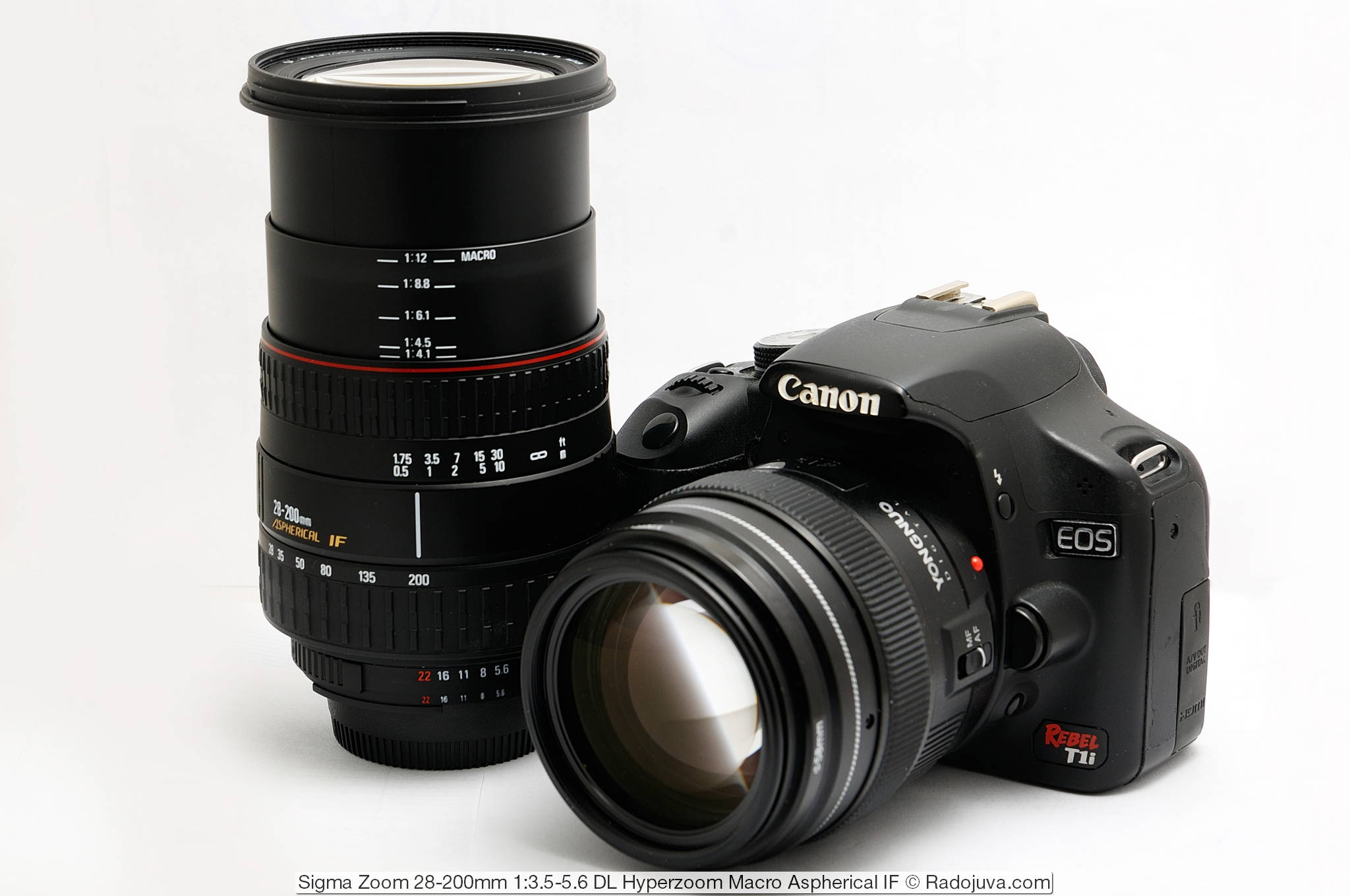
Sigma Zoom 28-200mm 1: 3.5-5.6 DL Hyperzoom Macro Aspherical IF and Canon 500D + Yongnuo 100mm f / 2.0
My experience
Sigma 28-200 / 3.5-5.6 DL looks great on any camera (especially the version for Canon, because the lens has a red ring). If you shoot in sunny weather, then Sigma 28-200 / 3.5-5.6 DL may be a godsend for a amateur photographer, but in general the impression is spoiled due to poor image quality. Even Quantaray for Nikon AF 28-300mm 1: 3.5-6.3 LDO Multi-Coated (28-300mmD Ashperical IF) optically better than Sigma 28-200 / 3.5-5.6 DL.
Older Sigma screwdriver lenses (Nikon versions) are durable enough to function well for a very long period.
If you are looking for such an inexpensive lens, I advise you to pay attention to more fast lenses. Sigma Zoom 24-135mmD 1: 2.8-4.5 or Sigma Zoom 28-105mm D 1: 2.8-4 Aspherical.
Results
Sigma 28-200 / 3.5-5.6 DL is a budget universal lens. Optically weak. Usually Sigmas like this work better.
Main advantages
- 7x zoom (for full-length lenses, this is a good indicator)
- good build quality, metal mount
- scale with focusing distances
- the presence of the aperture control ring (compatibility with film cameras + convenience for those who shoot video on another system)
- normal sharpness at covered apertures in the center of the frame, low vignetting on Nikon DX cameras, moderate chromatic aberration
- 8-blade aperture
- fast and accurate focusing of the internal type
- macro shooting capability with 1: 4.1 magnification at 200 mm focal length
The main disadvantages
- large diameter filters
- plastic focus ring
- noisy auto focus due to the lack of a modern quiet focus motor
- lack of a built-in focus motor (critical for users of amateur Nikon cameras without a focus motor)
- rotation of the focus ring during autofocus and, as a result, lack of the function of constant manual focus control
- inconvenient manual focus due to the small stroke of the focus ring
- focusing accuracy is lost while changing the focal length
- the direction of rotation of the focus ring does not match the original Nikon 28-200mm 1: 3.5-5.6D AF Nikkor.
- movement of the rear lens while changing the focal length, the effect of a vacuum cleaner / air pump
- independent and very sharp change in focal length under its own weight (perhaps the problem begins with age)
- strong 'Focus Breathing' effect (changes in viewing angle during focusing)
- there may be incompatibility with some cameras and / or teleconverters (no exact data)
- lack of data about the lens in modern cameras, which makes it difficult to automatically correct some types of distortion (distortion, etc.)
- poor image quality. Very low resolution on open apertures. Sharpness depending on the focal length. Fear of backlight.
- the lens is not optimized for digital cameras
More Sigma Lens Reviews here.
Material prepared Arkady Shapoval. Training/Consultations | Youtube | Facebook | Instagram | Twitter | Telegram

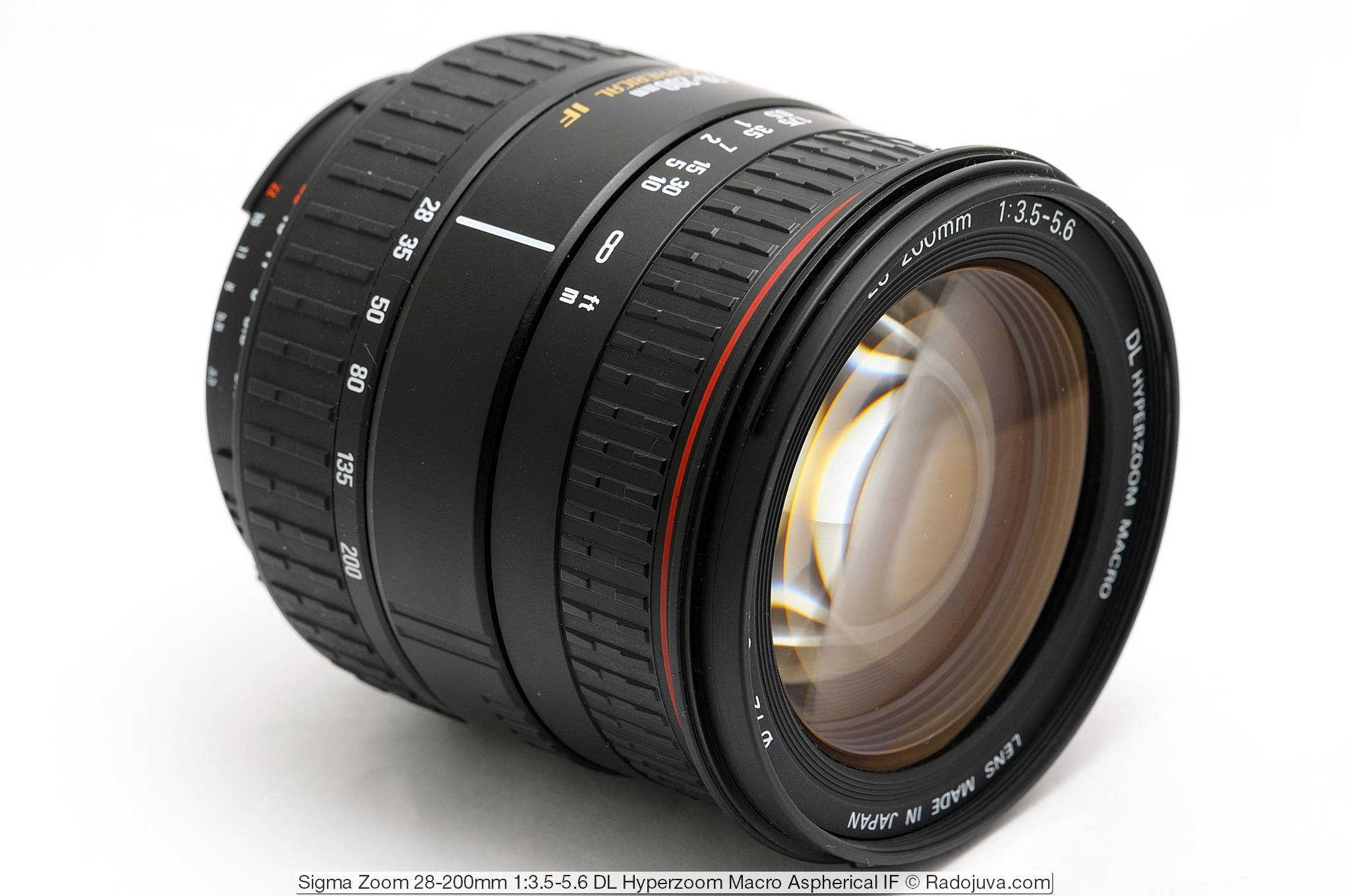
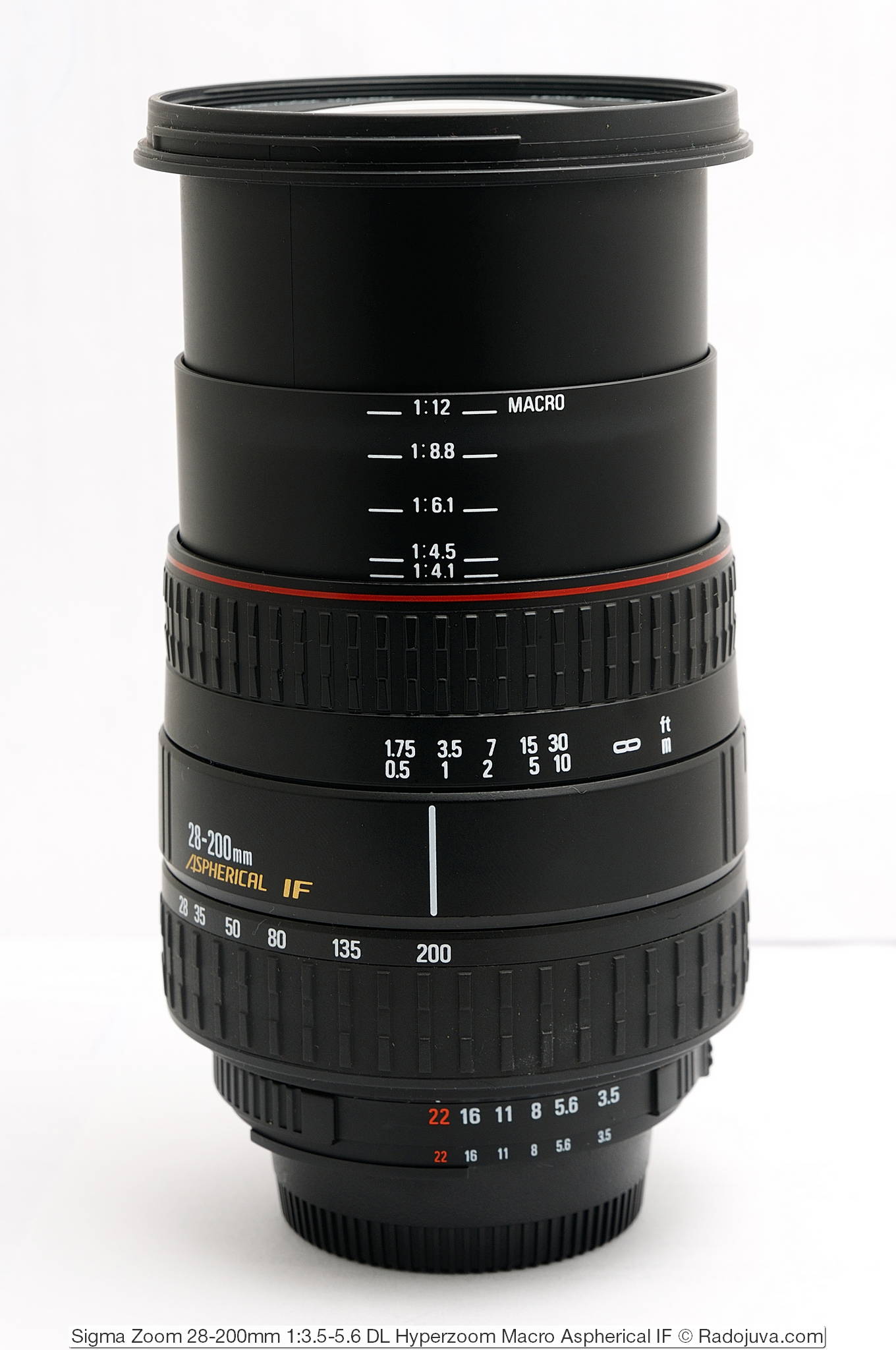

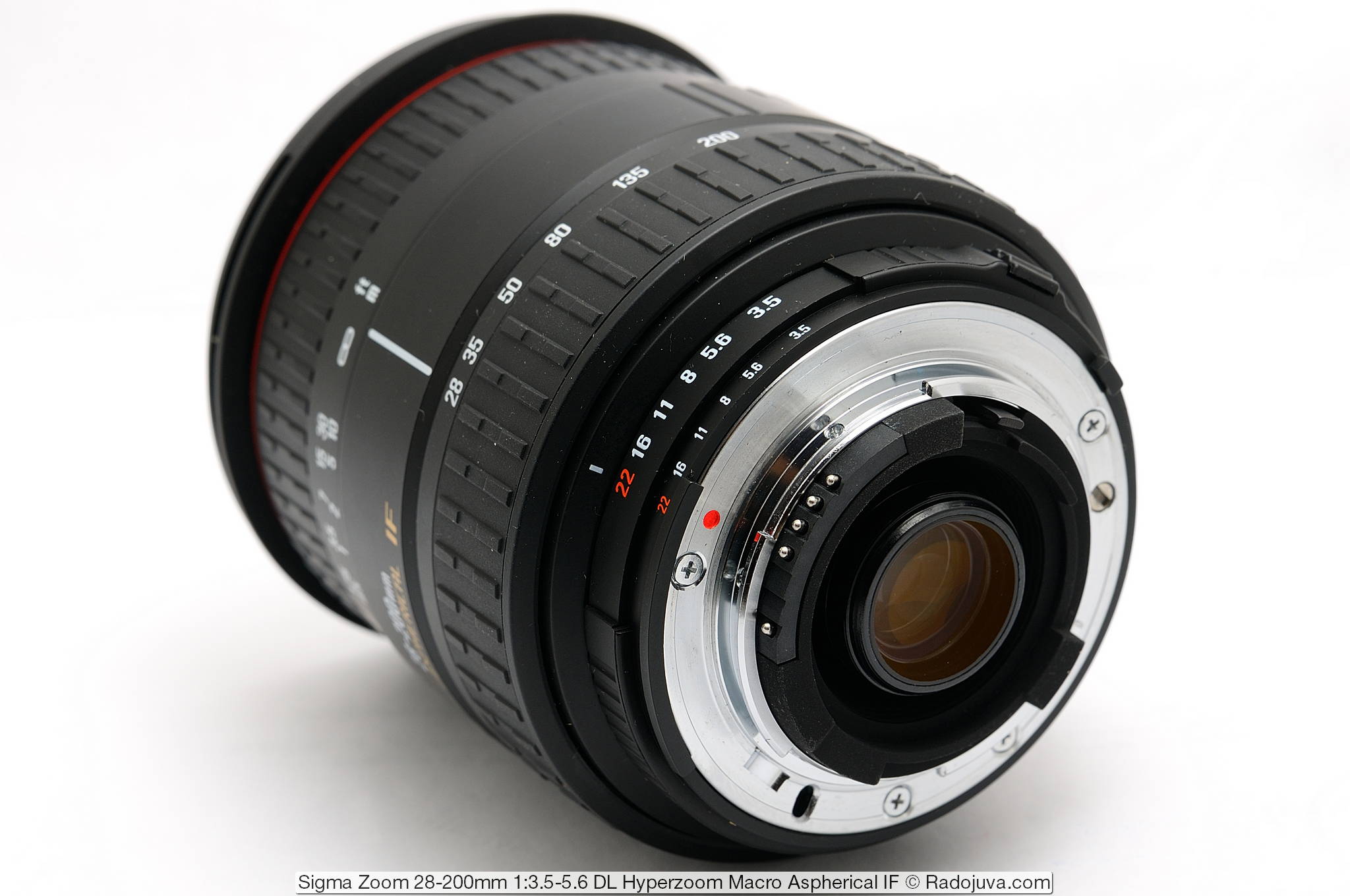
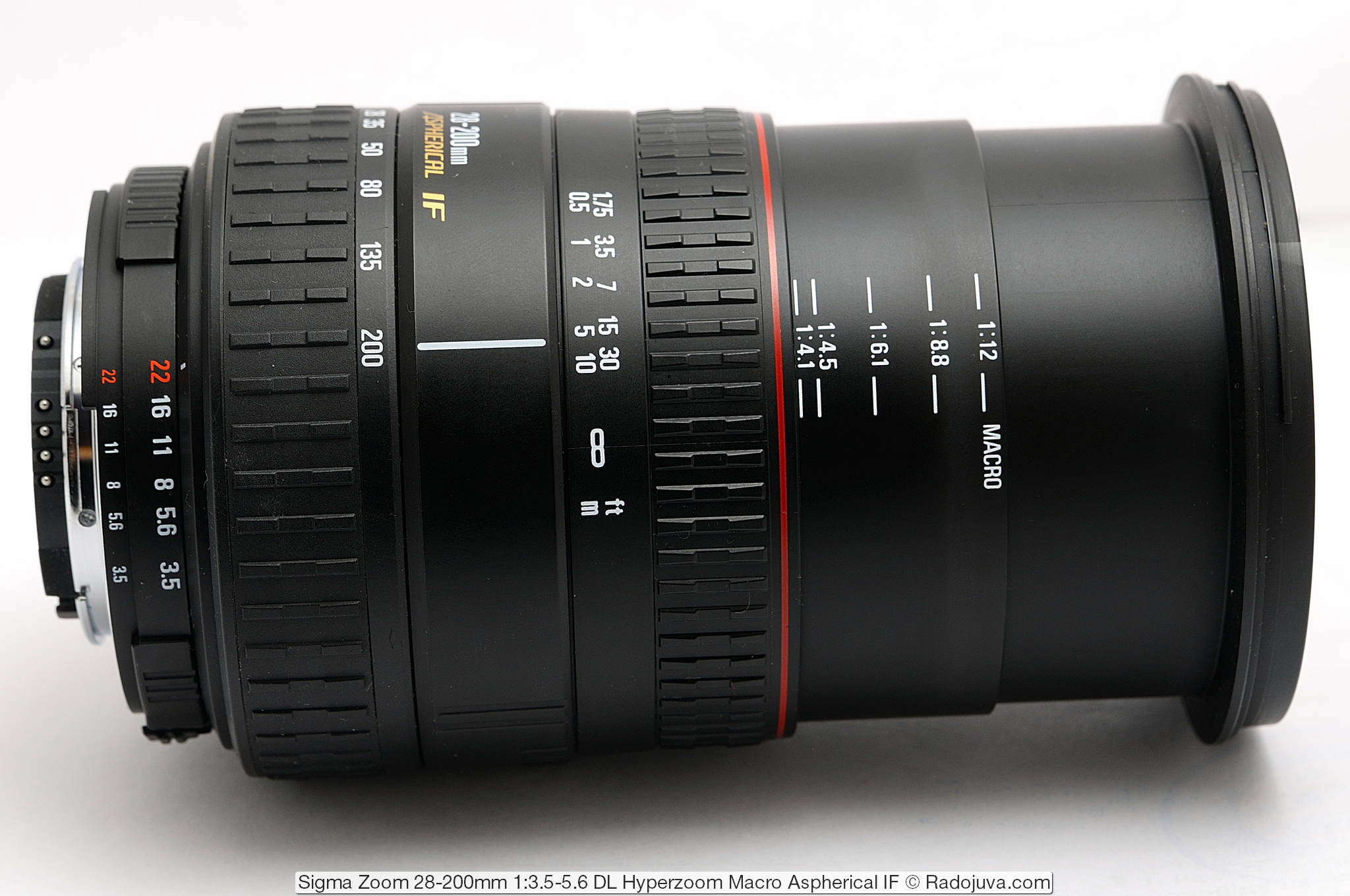















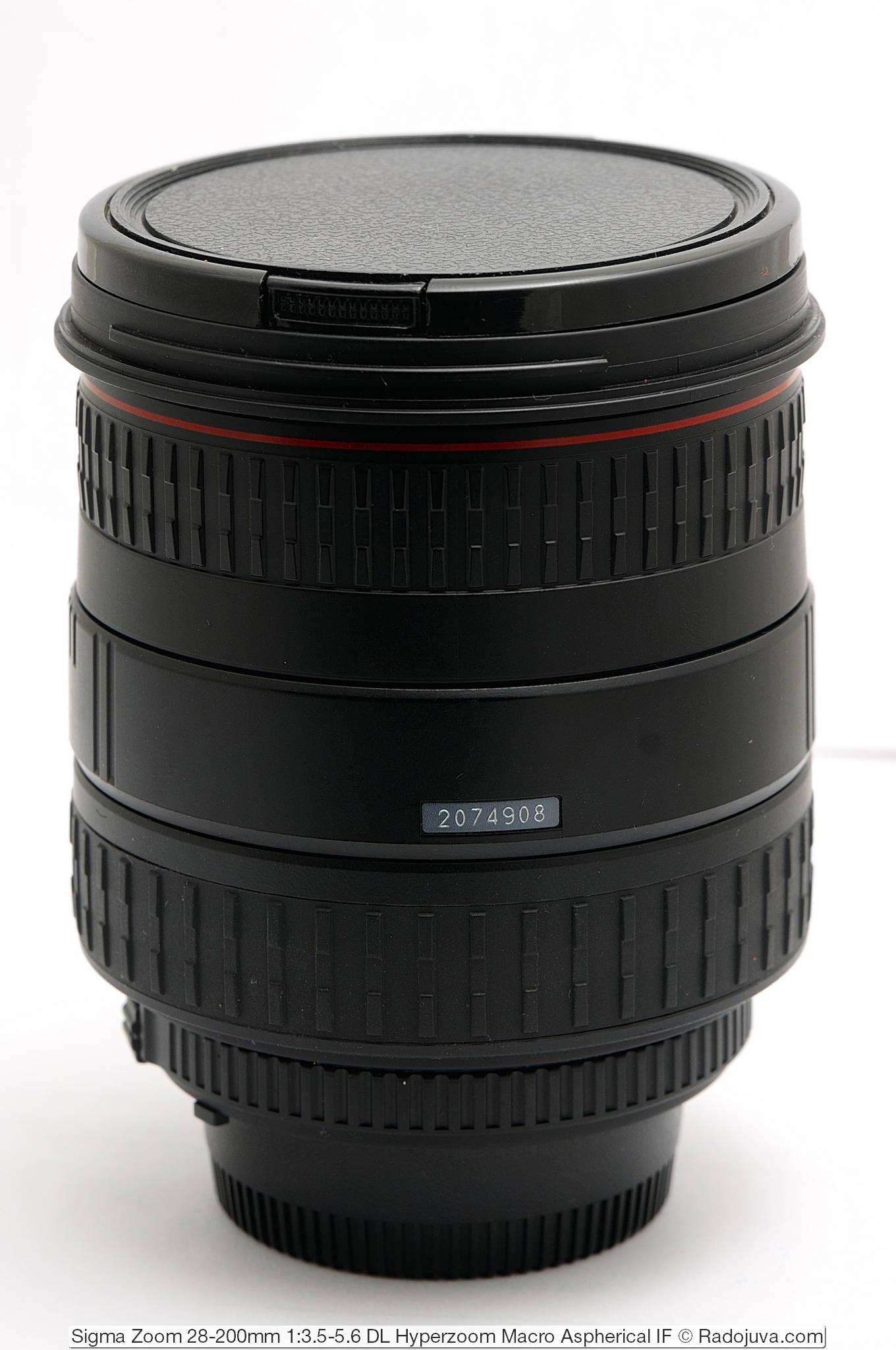
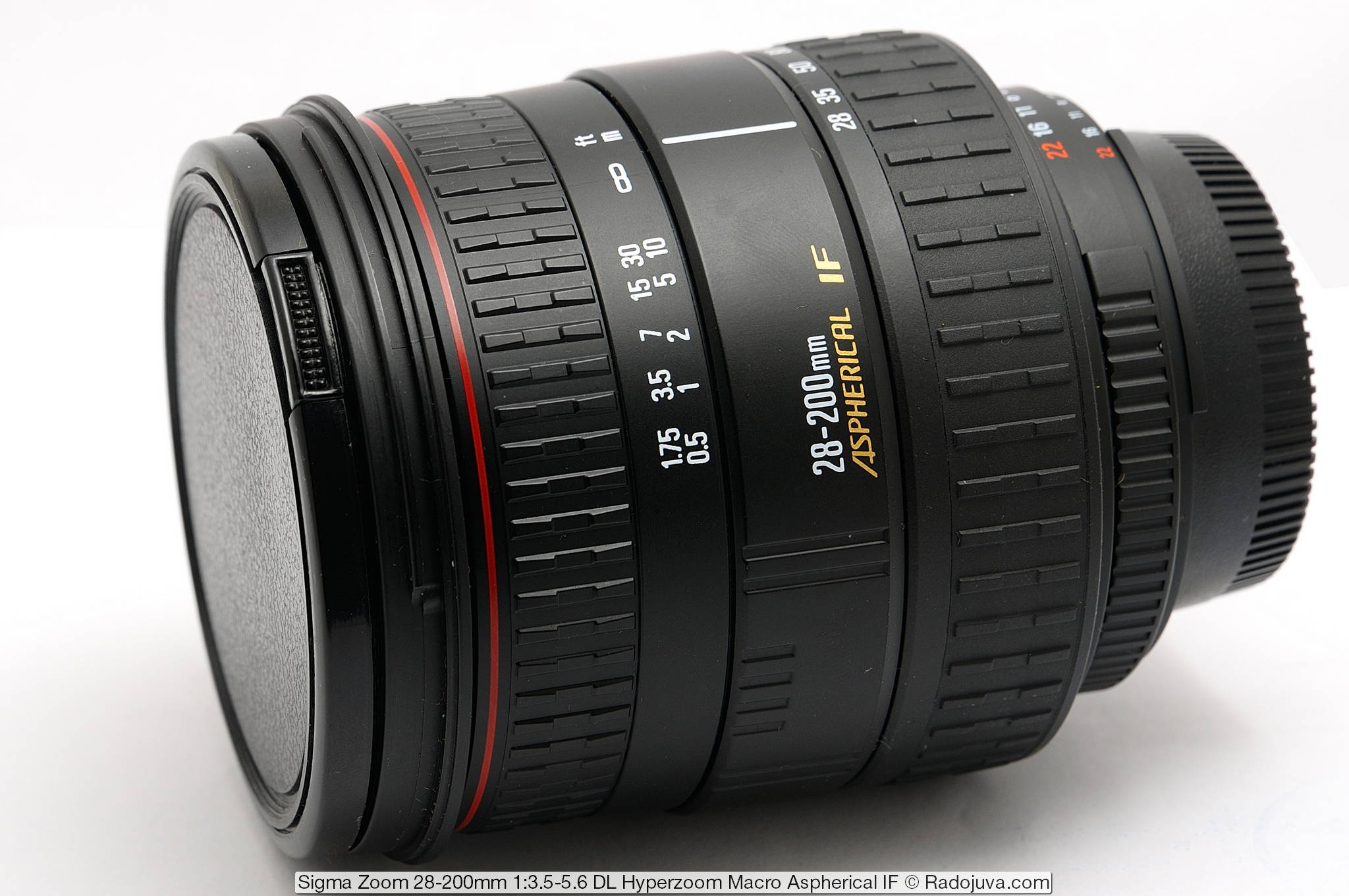

(10) 28mm open
(11) 28mm open
It seems that it’s not quite a circle of sharpness - it lathers more from below. Can the lens shift? Picture tin)
Yes, despite the efforts of the lens, the picture is like from a compact soap dish. Although for “scraping” someone may be interested in + cheap, lightweight and compact when worn for a long time.
The first frame above is 28mm open.
(12) 28mm open
(13) 28mm open
I came across this a couple of days before the trip under 450d as the compact started to break down, I wanted to take the crop 18-200 first, but I had to buy it quickly and I missed the two in the name
I bought it and it turned out that the diaphragm cable was torn, resulting in an open hole the entire trip.
I realized this only a day before departure, in general there was no time for a replacement
It’s good that we had Soviet manuals with us
The quality is so-so from that trip, but I got the hang of it, and sometimes it produced a decent picture
When we arrived, the diaphragm cable was re-soldered, everything works, the hole needs to be closed to 1/7-1/8, a 12mp crop seems to allow